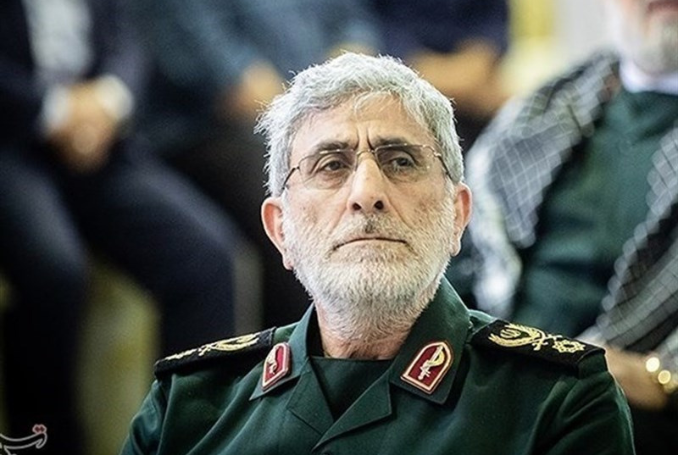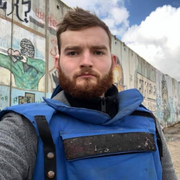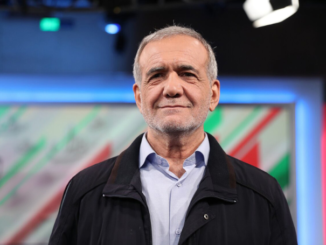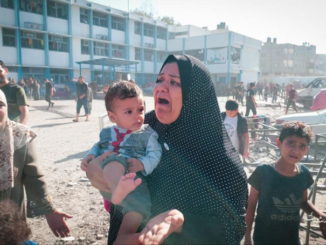
Israeli media worked to weaponize the lack of public appearance by the Quds Force General and ended up creating a litany of false stories.
In early October, the top Iranian General in charge of the Islamic Revolutionary Guard Corps (IRGC)’s elite Quds Force, appeared to have gone missing.
This occurred shortly after a string of assassinations carried out against Hezbollah and IRGC officials in Beirut and Damascus, leading to a wave of disinformation.
Following the assassination of Hezbollah Secretary-General, Seyyed Hassan Nasrallah, along with IRGC Brigadier General, Abbas Nilforoushan, an Israeli disinformation campaign commenced.
Part of this effort was spreading false claims or speculative stories on a range of details regarding Israeli strikes, the weaknesses of Iran and Hezbollah, as well as fabrications intended to paint a picture of divisions between Iranian officials that simply do not exist.
A particular focus was then placed upon Iran’s most senior Quds Force General, Esmail Qaani, who replaced Qassem Soleimani following his 2020 assassination in Baghdad, Iraq. Qaani had disappeared from the public eye for weeks, which in most other circumstances would not have been out of the norm, yet during such times his lack of a media presence gave life to a range of conspiracy theories.
On October 8, Israeli Prime Minister, Benjamin Netanyahu, announced the assassination of the man who is tipped to become the next Secretary General of Hezbollah, Hashem Safieddine.
Despite the Lebanese Party having allegedly denied the news through media contacts and the group not announcing his death, this assassination is paraded around as having been “confirmed”. However, another rumor began spreading that same day, which was that Esmail Qaani was also killed alongside Safieddine.
After days of speculation about the potential assassination of Esmail Qaani in Beirut, Israeli media reports began insinuating that he may have been killed in Syria. By October 10, the narrative then shifted and the story had changed to Esmail Qaani being a traitor.
Sky News, citing their own “sources”, released a story in which they claimed that Qaani had suffered a heart attack during interrogations, after his apparent arrest. Some Hebrew media Telegram groups began spreading rumors that the Iranian General had been outed for treason and defected to Israeli territory.
Then we had the controversial article, published by the Middle East Eye, entitled “Exclusive: Esmail Qaani under guard and questioned as Iran probes Nasrallah killing”.
This story claims to have been backed up by “ten sources in Tehran, Beirut and Baghdad, including senior Shia figures and sources close to Hezbollah and in the IRGC”, stating that while Qaani is alive, he is under investigation over the killing of Seyyed Hassan Nasrallah.
Yet, all of these claims appeared to fall apart after the public appearance of Emsail Qaani on October 15, when he was filmed at the Iranian capital’s Mehrabad Airport, waiting for the arrival of Brigadier General Abbas Nilforoushan’s coffin. Following this General Qaani then attended the funeral procession.
While Sky News, Fox News, the Jerusalem Post and other Western media outlets have proven themselves as biased pro-Israeli propaganda platforms over the past 12 months, the story published by the Middle East Eye is off-brand.
Usually, the Middle East Eye is publishing high-quality content and gives a platform to various Palestinian journalists.
This piece, however, was written by a former Reuters journalist, called Suadad al-Salhy, who reports from Baghdad and has adopted a critical line on the topic of Iran. Although al-Salhy’s stance on Iran does not infringe on her ability to report accurately, the idea that 10 sources all gave the same information regarding Esmail Qaani’s condition, was a strange development.
What could have happened here, is that general information may have been passed around to various figures throughout Iraq, Iran and Syria, which al-Salhy genuinely heard from. From there she may have decided to use some of this information, in parts, to construct the story published by the Middle East Eye.
The alternative is that this story was fed to the outlet by an intelligence agency, or was made up. The first option does however seem plausible, as general information has been floating around the rank and file of groups in Syria and Iraq, not specifically about Esmail Qaani, but about treason.
It could also be possible that all Iranian officials were subjected to interviews as part of a general series of security checks following the series of assassinations.
However, what is clear is that the Israeli media worked to weaponize the lack of public appearance by the Quds Force General and ended up creating a litany of false stories.
(The Palestine Chronicle)

– Robert Inlakesh is a journalist, writer, and documentary filmmaker. He focuses on the Middle East, specializing in Palestine. He contributed this article to The Palestine Chronicle.







